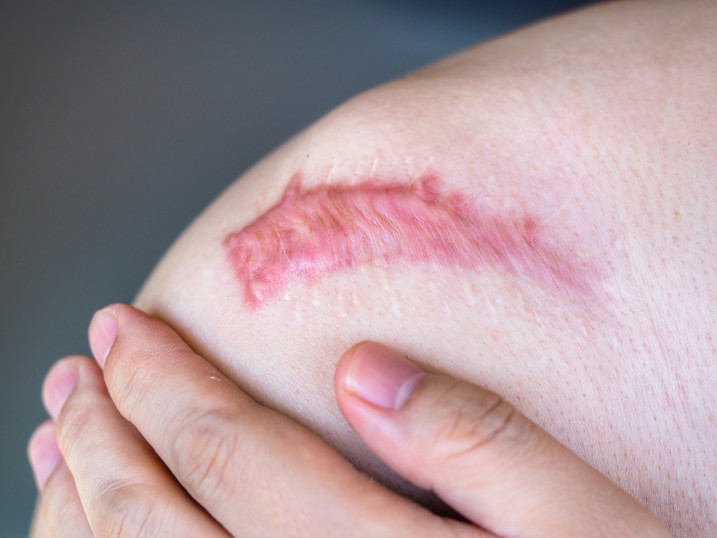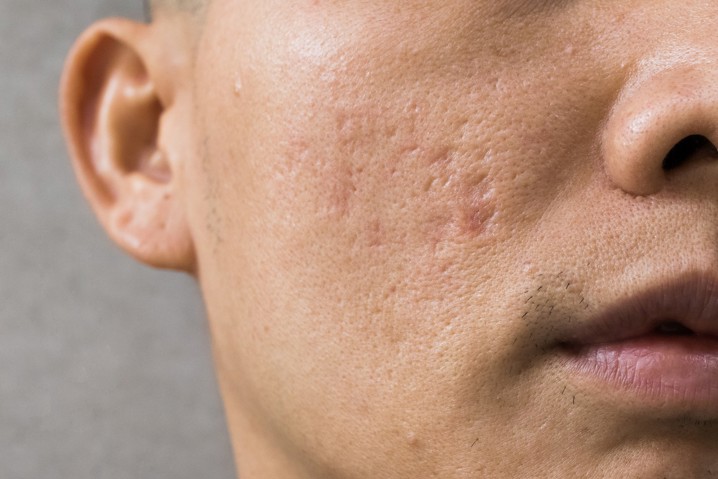

Choose the best and effective method with the help of specialists
Scarring is a natural way of healing and replacing lost or damaged skin. It is mostly made up of fibrous tissue.
Scarring is a natural way of healing and replacing lost or damaged skin. It is mostly made up of fibrous tissue.
Scarring can occur for many different reasons such as infections, surgery, injury or inflammation of tissues and can appear anywhere on the body.
The scar can be flat, protruding, concave, hyperpigmented, or hypopigmented. It can be painful or even itchy.
The final appearance of the scar depends on many factors, including the type of skin and the position on the body on which it is located, the type of injury and the age of the person.
With normal scarring of wounds, there is a possibility of abnormal scarring. Some of the more common are:
These are thick, rounded, irregular accumulations of scar tissue that grow at the wound site on the skin, but beyond the edges of the wound boundaries. They are often dark red in color compared to the surrounding normal skin. Keloids are formed from collagen that the body produces after the wound has healed. These scars can appear anywhere on the body, but more often they appear in the chest, back, shoulders and earlobes. They are also more common in dark-skinned people. Keloid scars can appear up to a year after the primary trauma to the skin.

Hypertrophic scars are similar to keloid scars, but their growth is limited within the boundaries of the original skin defect. This form of scarring usually responds better to treatment. These scars can also be dark red in color, and they are usually thickened and raised above the skin level. Hypertrophic scars begin to develop a few weeks after the skin injury.
Contractures occur during damage or injury to a larger area of skin resulting in scarring. The formation of the scar pulls the edges of the skin towards each other causing a tense reduced area of skin that can then affect the muscles, joints and tendons causing a decrease in movement.
Acne scars appear in about 30% of people with moderate or severe acne vulgaris. It is especially common in nodulocystic acne, acne conglobata and acne fulminans. Unfortunately, acne scars never go away completely, however their appearance improves over time. Acne has several forms of scars such as “ice-pick scars” (deep, narrow, hollowed-out scars), “rolling scars” (wide bumps with a sloping edge), “boxcar scars” (wide bumps with sharply defined edges), atrophic scars (flat, thin or concave scars) and hypertrophic or keloid scars (thickened, above the skin level).

Some scars can be minimized with certain dermatological techniques. However, treatment can only improve the appearance of the scar, it cannot completely erase it.
Specific dermatological procedures to alleviate scars will be determined by your doctor based on:
Some of the common procedures to reduce scars are:
Dermabrasion can be used to reduce small scars, minor irregularities on the surface of the skin, surgical scars, and acne scars. As the name implies, dermabrasion involves removing the upper layers of the skin with an electric machine that grinds the skin. As the skin heals from the dermabrasion procedure, the surface looks smoother and fresher.

Chemical peels are often used in the treatment of photodamaged skin, skin with visible hyperpigmentation and as an option for treating superficial scars. The top layer of skin is removed by applying chemical agents of variable percentages for the purpose of exfoliating the upper layer of the skin. In this way, the skin regenerates, resulting in an improved appearance of the skin.
These types of injections are used in the treatment of keloid and hypertrophic scars. Regular applications lead to the softening and reduction of this type of scars.
Cryosurgery can help reduce scar size by freezing the scar tissue. After the procedure, a blister appears and a gradual regression of scar tissue.
Laser resurfacing is a procedure in which high-energy light is used to thermally destroy damaged skin, resulting in better looking skin. It is used to reduce wrinkles and to treat hypertrophic scars.
Surgical scar revision involves surgically removing the entire scar and re-stitching the skin. A new scar will form, but the goal of this surgery is to create a less obvious scar. Surgical revision of scars is usually done on wide or long scars, scars that have healed inadequately or scars in visible places.
Radiation therapy is used very rarely as a scar treatment option. It is mainly applied for scars that are resistant to all the above treatment modalities.
At the Lohuis Filipović Polyclinic, we have adapted everything to the patients. You will be greeted by courteous staff, a professional approach and, finally, the most competent working methods. We do everything so that you feel as comfortable as possible in our office and in safe hands, in the hope that when you leave our clinic, you’ll leave having forgotten the concerns that brought you here
For a consultation and examination with our expert team, you can contact us by phone at +3851 2444646 or via our online form.